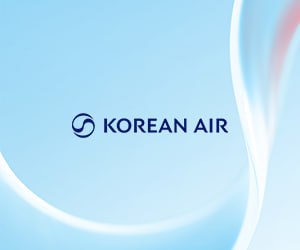
In quiet splendour . . . Cambodia’s most visited site, Angkor Wat, is expected to receive visitors in the fourth quarter this year. Heng Chivoan
Even as vaccination is progressing in Cambodia and globally, tourism players contemplate their long-term survival with the arrival of a five-year roadmap as the pandemic rages on
‘Our business is on the verge of a collapse. All our savings are gone and we have borrowed from banks, our friends and families. Now, we don’t know what to do!” bemoaned Clais Chenda, who owns two boutique hotels and an elephant sanctuary in northeastern province Ratanakkiri.
“We are suffering yet another blow with the curfew and inter-province travel ban. Many hotels that somehow survived till now will be forced into bankruptcy,” Chenda, also the president of Cambodia Hotel Association (CHA), related regarding the hospitality industry.
The situation took a turn for the worse following the third community transmission wave, which – comparatively more critical than the previous ones – is suppressing any hope the tourism sector might have glimpsed earlier this year.
Similarly, investment pressure on the sector, which has been a key gross domestic product (GDP) contributor, is likely to persist as investors employ a “wait and see” approach pending the resumption of global travels.
In less than a week from now, Khmer New Year, one of Cambodia’s main holidays, will be celebrated. Ordinarily, the week-long break sees Phnom Penh emptying out, as the exodus of city dwellers spend the traditional festival with families and friends in the province.
It is also a time to indulge in some spot tourism, which drives domestic tourism receipts up every season.
However, the inter-provincial travel ban imposed until April 20 along with orders to keep tourist attractions shut, will likely slay any chance of a revenue uptick.
The current coronavirus spread has claimed 24 lives as the number of cases spiked to 3,028 as of April 8, 2021, following the February 20 event.
On the heels of this, the government launched a five-year tourism roadmap to revive the sector which recorded a loss of $5 billion in revenue in 2020, underpinned by a fall of over 50 per cent in total internal tourism, the bulk of which comprised foreigners.
Until late February, over 3,000 hospitality businesses have wound up in the country, the majority of them in Siem Reap, home of UNESCO-listed ancient temple complex Angkor Wat, while knocking out a big portion of the 750,000 jobs in the industry.
With that, a prevailing debt problem gripped business owners and workers who appealed for an extension to the June deadline moratorium on repayments.
The plea, represented by some 100 civil society organisations, was finally met by commercial bankers and microfinance entities which agreed to an additional three-month reprieve to loan repayments.
Both the bank and microfinance associations said they would waive one month’s interest payment and penalty on loans taken by those inflicted by Covid-19, as well as automatically restructure the credit while deferring principal payments for three months.
However, there has been no indication on the government’s end to prolong tax exemptions for hotels, guesthouses, restaurants and travel agents in Phnom Penh, Siem Reap, Preah Sihanouk, Kep, Kampot, Bavet and Poi Pet which expires on June 30.
“The situation is getting worse each month and ending [these policies] will not help,” said Chhay Sivlin, president of Cambodia Association of Tour Agents.
“Tourism business owners will continue to exhaust their savings and personal assets in order to keep their agencies and hotels open, hoping for a light at the end of the tunnel,” she added.
In the meantime, tourism businesses owners struggle to keep their business afloat to ensure that more trade professionals do not vanish from the industry.

Idyllic sites like this in Koh Kong could draw eco-tourism tourisms. Heng Chivoan
“Many quality players have switched to other professions to provide for their families. At this point, I fear that no one would want to risk investing further and this might cause the industry to lose more good people,” Sivlin said.
Seemingly, the Asia Pacific region – the largest foreign direct investment recipient in 2019 – suffered an 87 per cent fall in greenfield tourism investments, amounting to $1.8 billion – the total value of 25 projects, versus $13.6 billion (81 projects) a year ago, UN World Tourism Organisation data showed.
On a micro level, venture capital and financial management firm OBOR Capital Co Ltd noted that tourism deals in Southeast Asia slid 50 per cent year-on-year in 2020 from 2019.
“The drop is 80 per cent when we look at funding amount year-on-year, excluding the investment in Traveloka Indonesia PT, which is a late stage company,” said OBOR Management director Shivam Tripathi.
In that context, a majority of investors in the region is on a “watchful mode” when it comes to travel start-ups, he said, when asked about rising investment trends in the tourism sector.
At the same time, many have diverted investments towards start-ups that are more relevant during and after the pandemic, he added.
In Cambodia though, approved fixed asset tourism investments as of September 30, 2020 totalled six projects, with a value of $3.9 billion, while full year 2019 listed 17 approved projects amounting to $6.1 billion.
The project value in 2019, which rose steadily in recent years, reflected a time when Cambodia enjoyed direct flights from China, South Korea, Japan, Taiwan and Singapore, and annual tourist growth of 11 to 12 per cent.
To achieve such growth once more, the government contemplated several proposals including a special tourist visa and travel bubble last year.
At the time of writing, the exact action plan to revive and relaunch the sector is not yet known as the content of the tourism roadmap has not been made public, apart from the identification of three recovery phases.
Based on Prime Minister Hun Sen’s announcement, the document outlines “nine strategies, 49 strategic activities, 180 detailed strategic activities and 17 priority programmes”.
An inter-institutional mechanism will be set up to guide and monitor the implementation of the action plan.
However, all this is determinant on the vaccine rollout and control of the contagion.
As of April 5, Bloomberg vaccine tracker stated that some 419,000 doses had been administered at an average of 10,202 doses daily, indicating a coverage of just 1.3 per cent of the population.
At this pace, it will take another 6.5 years to cover 75 per cent of the population, Bloomberg said.
But, Hun Sen’s vision of making the vaccines mandatory to civil servants and armed forces could push the inoculation campaign into first gear.
As it stands, Cambodia is among the top few nations in Southeast Asia that has seen an upsurge in vaccinations, ahead of Thailand and Vietnam.
Accordingly, Bloomberg data showed that Thailand had administered 295,000 doses, enough to cover only 0.2 per cent of the population whereas Vietnam had rolled out 53,000 doses, which was equivalent to a mere 0.1 per cent coverage of the population.
Nevertheless, Thailand has announced robust plans to open up its tourism sector including cutting quarantine period to 10 days, popular tourist destinations, like Koh Samui and Phuket accepting fully vaccinated tourists with seven days quarantine soon, and offering a 30 to 90-day visa free entry. In comparison, Cambodia is somewhat soft on such loud efforts.
Numerous attempts to contact Ministry of Tourism undersecretary of state Sok Sangvar and spokesman Top Sopheak to get a full picture proved futile.
Recall that Cambodia recorded 1.3 million international visitors as of December 31, 2020, down 80.2 per cent year-on-year from 6.6 million. In 2019, a total of $4.9 billion was gained from tourism receipts, a sum that had been rising annually.

Source: Tourism Statistics Department, Ministry of Tourism Cambodia
Similarly, international tourist arrivals in Thailand plunged 83.2 per cent to 6.7 million last year from 39.9 million in 2019, a year that registered an estimated two trillion baht ($64 billion) in revenue.
As Covid-19 continues to grip the world while vaccination is ramped up, albeit in varying quantum depending on supply and production, the outcome remains palpable.
In developed nations, talks of vaccine passports and traffic light system, particularly in UK, are in order as travel is expected to take off with summer around the corner.
This is good news for the travel market but is Cambodia ready for tourists compared to its peers in the region?
“If you look at the numbers, divide and compare with Thailand, they are in a worse off situation than us,” said Thourn Sinan, chairman for the Cambodian chapter of the Pacific Asia Travel Association.
However, he contented, as a destination Thailand is more popular because of its status as a global tourist site and has more products and tourism facilitation efforts than Cambodia.
“But although Thailand announced tourist and quarantine guidelines [to welcome tourists by mid-year], I don’t think we are far off from opening up because the Cambodian government, and I am not promoting them [when I say this], has been working hard to come up with the policy to [revive] tourism,” Sinan said.

Source: Tourism Statistics Department, Ministry of Tourism Cambodia
Meanwhile, OBOR Management’s Tripathi, who is also co-founder and CEO of Camboticket, an online booking platform, opined that local tourism would benefit more if local businesses jointly organised and promoted more events regularly to draw more people to travel sites.
He made the remark on the basis that people were experiencing fatigue over a lack of new sites, seeing that local tourists have visited some places multiple times and these destinations might not offer new things, resulting in declining interest.
“It’s important that more activities in popular travel destinations are developed and at the same time new destinations are promoted. We noticed a strong spike in travel during New Year as many of these destinations were organising events on New Year’s Eve and people were excited to travel,” he said.
Asked what strategic measures can be implemented as global travel opens up, Tripathi, speaking from an investor’s viewpoint, said there is a real need for ASEAN countries to come together to build programmes that allow for easier flow of travellers within the bloc.
For instance, relaxing requirements for people who have been vaccinated could be a good first step.
“Many countries have been trying different programmes [such as] travel bubbles, removing or reducing quarantine requirements but none of the programmes have provided the desired results yet.
“So it’s a matter of continuous iterations of these programmes to see what could be a good long term solution to bring tourism sector back on track,” Tripathi told The Post.
Seemingly, new trends have emerged as people become more conscious of their impact on the environment, eco-tourism and frugal holidays could be on the cards, particularly led by young adults, who have received vaccines.
This could mean a rising interest in hostels, homestays and budget hotels, though that might not be the case in Cambodia for the moment with the current predicament, CHA’s Chenda lamented.
“I am not in a position to tell you how many budget places will be able to accommodate younger groups this summer as many of them [budget hotels] won’t be around in the coming weeks,” she stressed.
While she is glad to see that things are evolving positively in the West and in “some countries nearby”, as far the industry is concerned, she does not see any light at the end of the “Covid-19 tunnel”.
“We still need to pay our staff, taxes [as only certain provinces are aided by the government] and insurance with no revenue at all. That is all I can say right now. It is difficult to make plans when [we are] gravely wounded,” she said.














